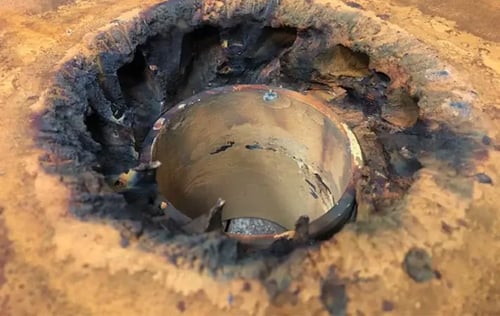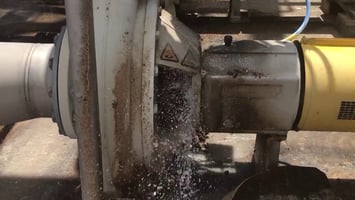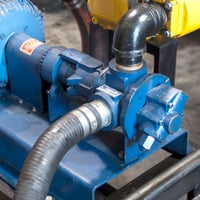Mechanical seals play a critical role in preventing leakage and maintaining the integrity of fluid...
How to Prevent Pump Cavitation: Techniques and Best Practices
 Pump cavitation is a common and potentially damaging phenomenon that can occur in fluid processing systems. It occurs when the pressure in the fluid drops below the vapor pressure, causing vapor bubbles to form and collapse within the pump. These collapsing bubbles create shockwaves that can erode pump components, reduce efficiency, and ultimately lead to system failure. However, with proper understanding and implementation of prevention techniques, pump cavitation can be effectively mitigated.
Pump cavitation is a common and potentially damaging phenomenon that can occur in fluid processing systems. It occurs when the pressure in the fluid drops below the vapor pressure, causing vapor bubbles to form and collapse within the pump. These collapsing bubbles create shockwaves that can erode pump components, reduce efficiency, and ultimately lead to system failure. However, with proper understanding and implementation of prevention techniques, pump cavitation can be effectively mitigated.
In this article, we'll explore some essential techniques and best practices for preventing pump cavitation.
Understanding Pump Cavitation: Before delving into prevention techniques, it's crucial to understand the underlying causes and characteristics of pump cavitation. Cavitation typically occurs in pumps when:
- The pressure at the pump inlet drops below the vapor pressure of the fluid.
- The pump operates at high speeds or experiences rapid changes in flow rate.
- The fluid contains dissolved gases or impurities that vaporize under low-pressure conditions.
- The pump experiences excessive turbulence or flow restrictions.
When cavitation occurs, vapor bubbles form and collapse as they pass into higher-pressure regions within the pump. This cyclical process generates noise, vibration, and potential damage to pump components over time.
Prevention Techniques:
-
Proper Pump Sizing and Selection: Ensure that the pump is sized correctly for the intended application, taking into account factors such as flow rate, pressure requirements, and fluid properties. Select a pump with a suitable operating range to minimize the risk of cavitation under varying conditions.
-
Optimize System Design: Design the fluid system with smooth, unrestricted flow paths to minimize turbulence and pressure drops. Avoid sharp bends, sudden expansions or contractions, and other flow disruptions that can contribute to cavitation.
-
Maintain Adequate NPSH: Net Positive Suction Head (NPSH) is a critical parameter for preventing cavitation. Ensure that the available NPSH exceeds the required NPSH for the pump to operate without cavitation. This may involve optimizing pipe diameters, minimizing suction line losses, and maintaining proper fluid levels in reservoirs.
-
Control Operating Conditions: Monitor and control operating conditions such as flow rate, pressure, and temperature to avoid conditions that promote cavitation. Avoid rapid changes in flow rate or pressure that can induce cavitation, and use throttling valves or variable speed drives to maintain stable operation.
-
Implement Anti-Cavitation Devices: Install anti-cavitation devices such as inlet flow straighteners, diffusers, and inducers to mitigate cavitation effects. These devices help to distribute flow evenly, reduce turbulence, and increase the pressure at the pump inlet to prevent vapor bubble formation.
-
Regular Maintenance and Inspection: Conduct regular maintenance and inspection of pump components to identify and address potential cavitation issues early. Inspect impellers, casings, and other critical parts for signs of erosion, pitting, or damage caused by cavitation.
Pump cavitation is a significant concern in fluid processing systems, but with proper prevention techniques and best practices, it can be effectively managed. By understanding the causes of cavitation and implementing measures to optimize system design, control operating conditions, and maintain equipment, engineers can minimize the risk of cavitation-related damage and ensure reliable pump performance. With a proactive approach to cavitation prevention, operators can maximize pump efficiency, extend equipment lifespan, and avoid costly downtime.
Implementing these prevention techniques can help to minimize the risk of pump cavitation and ensure the reliable and efficient operation of fluid processing systems. By understanding the causes of cavitation and implementing preventive measures, engineers can protect pump equipment, reduce maintenance costs, and optimize system performance.




